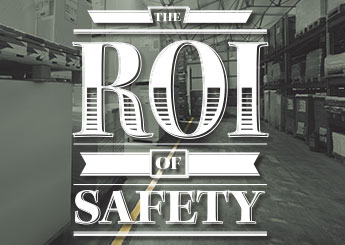The ROI of Safety
Would you spend $1 to save $2 in the future? How would you feel about $3 or $4 or $6 in future savings for every dollar you spend now?
The choice may seem like an easy one, but when that first dollar becomes millions of dollars, and the savings may not be seen until years later, spending money up front can become harder to justify. This is a situation in which many occupational safety and health professionals find themselves when trying to convince upper management that investing in training or equipment will lead to safer workplaces.
But experts say the savings exist, and – armed with the right figures on the costs of injuries – safety pros should be able to successfully argue that investments in safety will result in savings down the line.
The cost of injuries
Safety’s return on investment is dependent on knowing one important thing: How much does an injury actually cost? Fully understanding all the costs associated with a workplace injury can be difficult. Several organizations – including the National Safety Council and the Centers for Disease Control and Prevention – have models that attempt to estimate the costs, but these different models can vary greatly, according to Ken Kolosh, manager of the NSC statistics department. (View the full infographic featuring safety ROI statistics.)
For example, CDC’s estimate shows a fatal injury carries an average cost of about $991,027. This average includes only hospital costs. In contrast, the NSC model puts the average fatality’s cost to society at $1.42 million. These figures, although high, are likely to be lower than the actual cost of a single death because both models reflect only direct costs. Direct costs include workers’ compensation, medical expenses, civil liability or litigation costs, and property losses.
Indirect costs can be much more expensive: For every dollar in direct costs, indirect costs could be as much as $2.12, according to NSC. Indirect costs include workplace disruptions, loss of productivity, worker replacement, training, increased insurance premiums and attorney fees.
Using this math, a single fatal workplace injury goes from costing an average of $1.42 million to costing nearly $3 million on average.
And this may be on the low end of the scale. Some studies have indicated that indirect costs for injuries in the construction industry can be as much as 17 times more than direct costs, depending on the type of incident, NSC states.
Despite the variances in the cost-estimate models, Kolosh stressed that the cost savings from safety are real. “Safety’s not just a nice thing to do,” he said. “It has a lot of economic relevance as well.”


